The 2025 edition of the HSA Bank Health & Wealth IndexSM is a reimagined look at how we discuss and interpret health and wealth engagement. HSA Bank surveyed 2,000 employed, benefit-eligible individuals ages 18 to 64 across a range of industries. The survey assesses employee awareness and engagement with benefits packages and accounts available to them through their employers. The findings reveal how employees engage with their benefits, how satisfied they are with their current options and what they look for in the future.
Explore trends in how employees use their benefit accounts, insights into which specific benefits they perceive as valuable and learn how employers can fill the gaps. This report provides important usage trends related to Health Savings Accounts (HSAs) and a variety of other accounts you may offer. You’ll benefit from fresh insights into consumer healthcare engagement and actionable takeaways for what you can do to help your workforce, in addition to everything you already do today.
Health and wellness
A positive takeaway from this year’s research is most employees show a dedication to improving both their physical and financial health. When asked if they had made a conscious lifestyle change to improve their physical health within the last year, 85% of employees said yes, with this number notably higher among younger generations. Nearly nine out of 10 millennial and Gen Z employees said they’ve made changes in the past year to improve their health while almost one in four (22%) of baby boomers say they have not made changes.
Seventy-four percent of employees said to have made intentional changes to improve their wealth and finances in the past year, through means like paying off debt, funding an emergency savings fund, investing and more.
Similarly, the number of employees making intentional changes to improve their wealth and finances was highest among Gen Z (84%). This includes actions like making a budget, which 55% of Gen Z employees said they did compared to the average of 41% for all employees. These efforts taken by younger generations may be in attempt to alleviate the fact that money concerns cause a significantly higher toll on mental health among Gen Z (45%) and millennials (45%) compared to older generations (35% of Gen X and 17% of baby boomers). These responses suggest an interest in establishing financial wellness at an early age, and possibly a cultural shift that will continue with future generations entering the workforce. Despite this apparent interest in financial well-being, only 10% of all employees said to have funded an HSA or invested HSA funds in the past year, revealing a major opportunity for improved education.
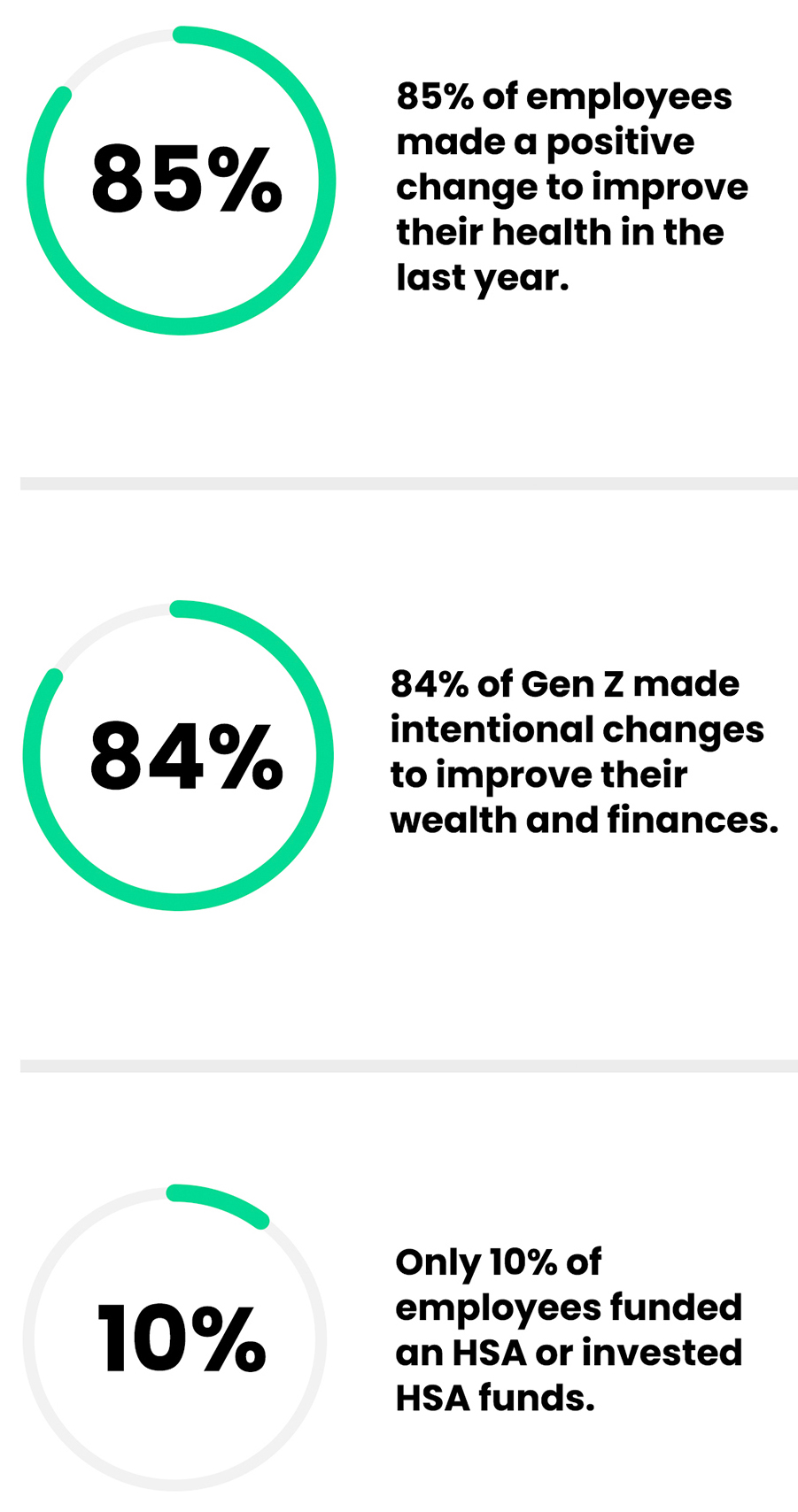
Challenges
Employees showed a desire to improve their financial well-being, but also revealed a few issues when it comes to covering necessary expenses. Over half of employees (54%) said their financial state impacted their ability to save for retirement, and nearly 25% claim their finances impacted their ability to pay for prescription medications — two of the key benefits that come with funding HSAs or other accounts like Flexible Spending Accounts (FSAs) that can help cover healthcare costs. Additionally, more than one-third of employees (35%) say they regularly think about a financial decision they regret. It’s possible to help alleviate this issue by funding accounts that are only able to cover specific eligible expenses.
Insights & actions
Offering an HSA can help employees pay for prescription medications and save for retirement. HSA accountholders can use their funds now on qualified healthcare expenses or save for their future through investment options.

Awareness of benefit costs
Most employees say they’re confident they know how to use their benefit plan, what’s included and how much it costs. It’s important employees know the costs associated with their plan, which can be an indicator of how much they should save with their HSA to cover their deductible and out-of-pocket maximum. HSA Bank has technology available for employees to connect their HSA to their health plan, enabling them to view deductible and out-of-pocket maximum trackers to see a bigger picture of their healthcare funds usage and savings. However, further data revealed a knowledge gap with benefits beyond an HSA, including important benefits that can enhance financial planning and ease some of the specific problem areas identified by employees.
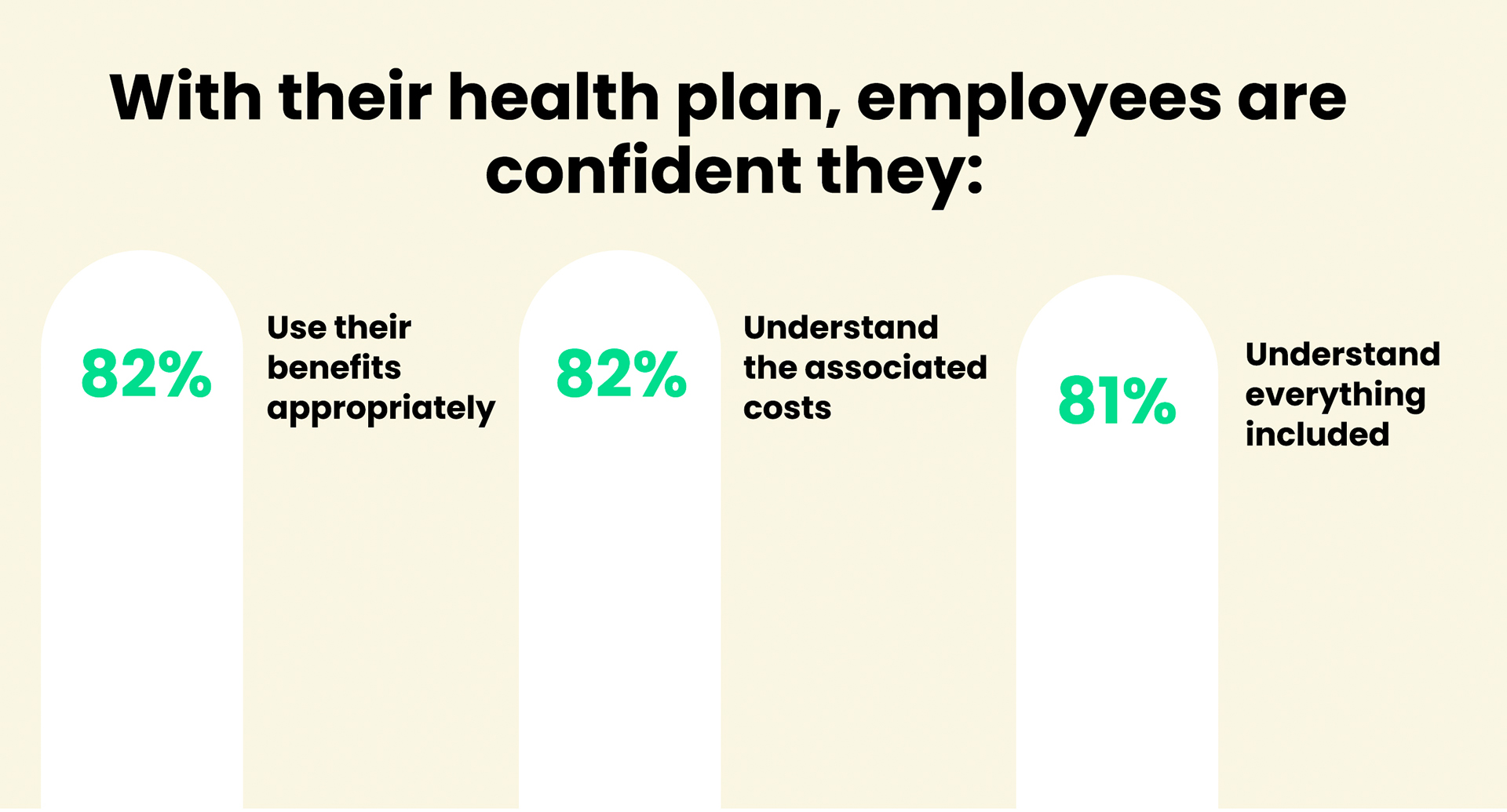
When asked about the types of benefits that employees are aware their employer offers, 36% identified HSAs. However, other benefit accounts had much lower awareness. Specifically, only 8% of employees said they have Emergency Savings Accounts (ESAs) offered by their employer. Fifteen percent of all employees and 21% of Gen Z report they took on debt to cover an unexpected healthcare issue — a concern that can be directly addressed by the ability to enroll in an ESA. Dependent Care FSAs (DC-FSAs) also performed low at 11%, though 2024 research by the Society for Human Resource Management says that 63% of employers do offer DC-FSAs.*
Note: Since responses are self-reported by employees, they may not fully represent the actual number of employers that offer these types of benefits. The gap could be attributed to the relevancy of each benefit to an employee’s specific needs and priorities, or a general lack of awareness about options available to them.
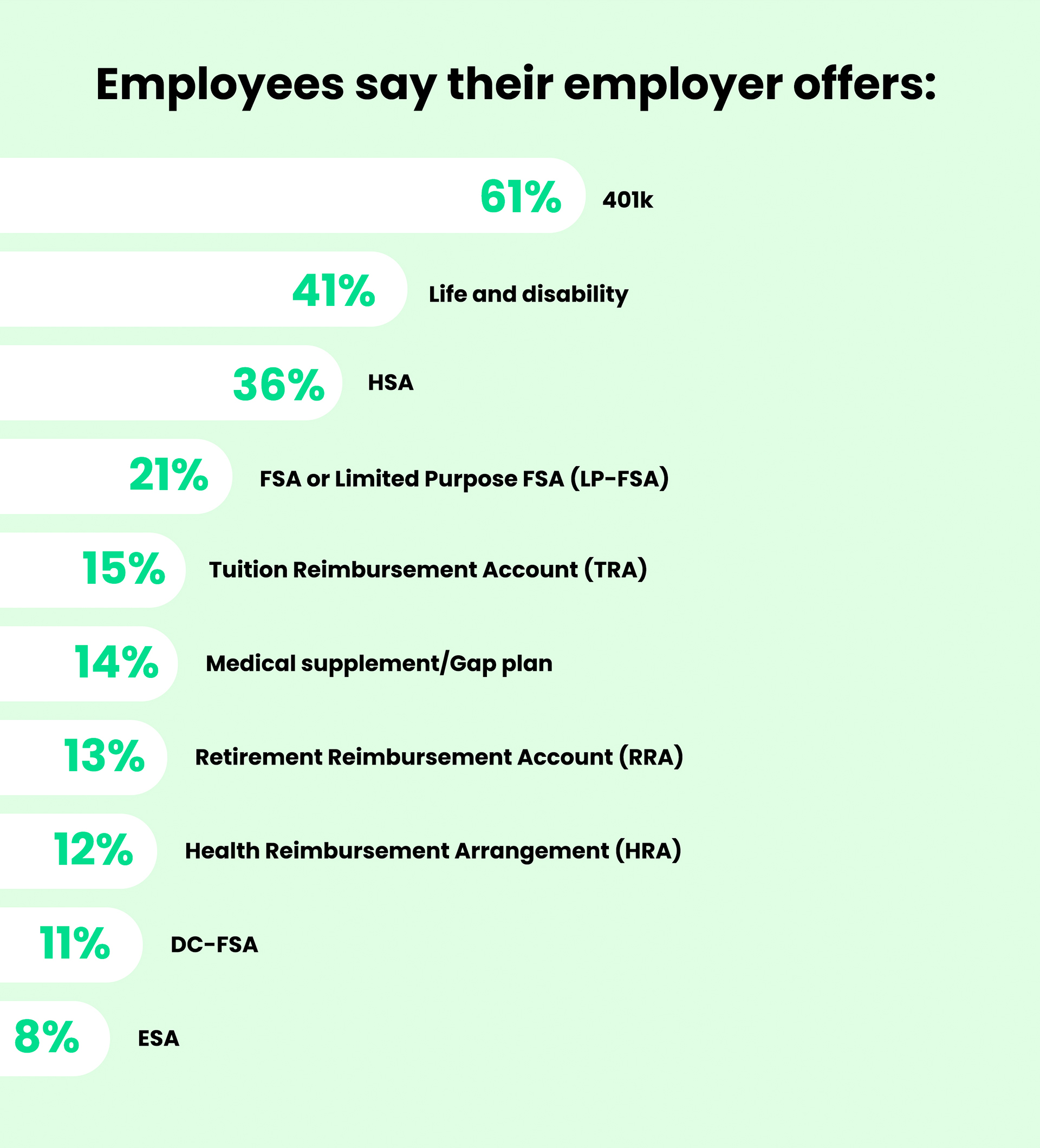
There are several benefits accounts that work well with an HSA, enabling employees to plan for their specific needs. Include one or more of these benefit accounts to set yourself apart from other employers and demonstrate your company’s commitment to its employees.
Insights & actions
HSA Bank data suggests there may be a significant gap between the benefits that employers offer and the benefits that employees are aware of. You can offer multiple benefits accounts to meet specific employee needs and boost awareness and enrollment by providing educational resources year-round.

HSA usage and confidence
How do employees use their HSA?
One half of employees say they primarily use their HSA to pay for appointment copays and doctors office visits, and 39% use their HSA for short-term expenses. This is the recommended way to prioritize HSA funds since it’s a best practice for HSA accountholders to keep at least the amount of their deductible available in their account to cover short-term expenses. Forty percent reported that they save for long-term healthcare expenses and lastly 20% use it as an investment tool.
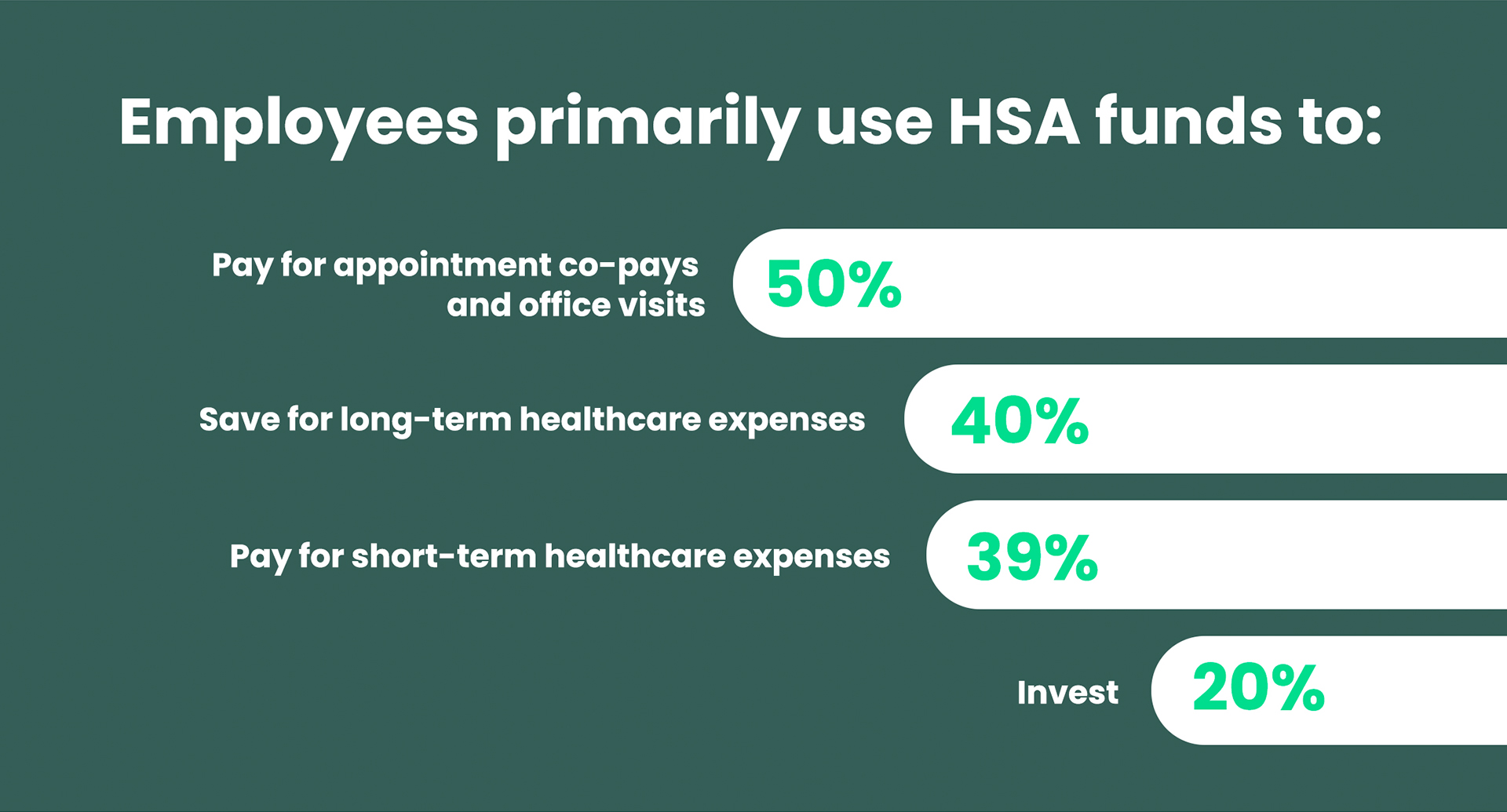
Cost concerns
When asked how often they consider the costs of healthcare expenses and worry about healthcare bills, employees said they do both more often than they set money aside for unplanned emergency expenses or save money specifically for healthcare costs. Notably, almost two-thirds of employees (64%) say they worry about current or future medical bills. Those in Gen Z are more likely to save and put money aside for healthcare expenses (34%), compared to those in older generations like baby boomers (16%) and Gen X (15%). It was shown that generally, older employees spend more and contribute less to their HSA. This may be due to an increased need to pay for healthcare expenses at an older age, or that older generations can use HSA funds to pay for Medicare premiums, or any other expense without tax penalties after age 65.
Investing HSA funds is a valuable opportunity to increase savings to cover healthcare costs and build a retirement nest egg. Forty-four percent of employees said they want to invest more with this goal highest among millennials (50%), though they may not know how to use their HSA as an investment tool. Only 25% of employees said they strongly agree their employer provides education and resources to help enable them to invest their HSA funds.

Insights & actions
Only 20% of employees primarily use their HSA to invest, though 44% say they want to invest more. There may be a lack of education and awareness around how to use an HSA as an investment tool. The HSA Invest program can help ease the transition into investing, by providing up to three investment options meant to cater to different experience levels and financial objectives.

Employee decision-making challenges
Employees revealed specific areas where more financial support may be beneficial, like 15% who said they took on debt to pay for a healthcare emergency, the third highest response out of a list of potential expenses that could cause debt. Plus, almost half of baby boomers (45%) and Gen X (47%) are concerned that they’re still not financially prepared to retire.
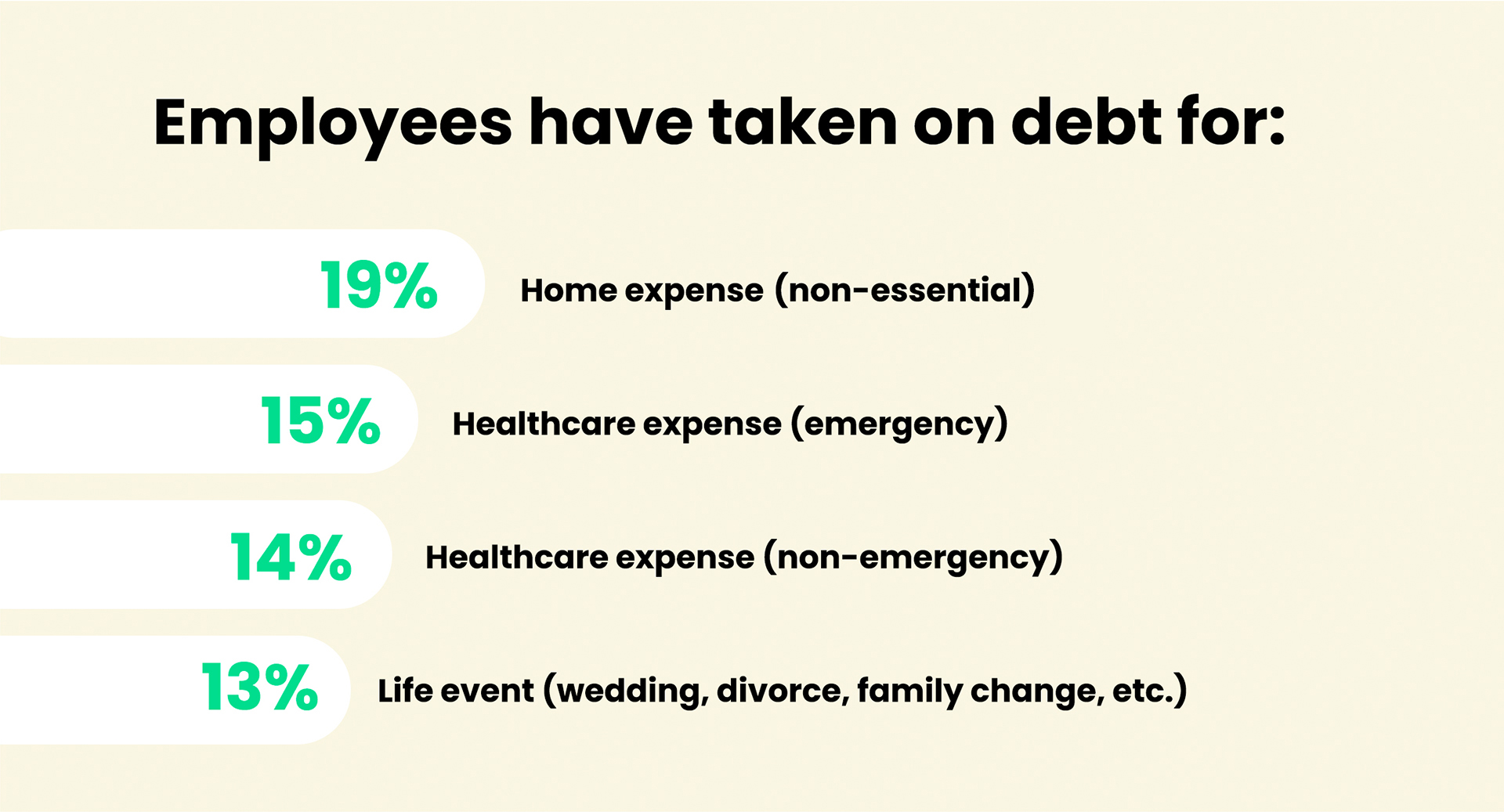
When it comes to selecting benefits, a quarter of employees (26%) said they often rely on resources outside their employer to make decisions about their healthcare plan and benefits. With the proper engagement strategies and educational resources, employers can position themselves as a trusted source of information to help employees make confident benefits decisions. Consistent engagement may be especially beneficial for younger employees in Gen Z, who most often find health plan enrollment stressful (30%) and most often said they enrolled in the wrong plan (17%).
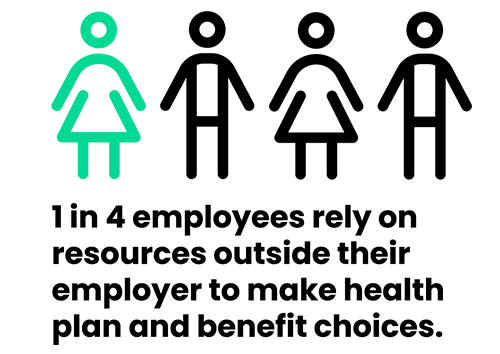
Insights & actions
Employees identified challenges they face such as taking on debt to cover healthcare emergencies and concerns around financially preparing to retire. You can help alleviate these problems by offering HSAs and other compatible benefits like FSAs, ESAs and more to help employees plan and save for expenses and reduce financial stress.

How employers can make a difference
Employer HSA contributions have become a new normal in most workplaces. Eighty-five percent said that their employer offers an HSA contribution. Understanding employee expectations when determining employer HSA contributions can help employers offer an attractive and competitive benefits program. Although a matching contribution was the most reported type from eight out of 10 employees, there are multiple ways employers can contribute to employee HSAs.
You choose to match a percentage of what your employee contributes to their HSA.
Employees are provided with a list of health or wellness activities that can earn an HSA contribution from their employer, like getting a biometrics assessment, booking a dental cleaning or speaking to a health coach.
You make a one-time initial (or seed) contribution to your employee’s HSA.
You choose a contribution amount to fund your employee’s HSA on a selected basis like monthly, biannually, etc.
What employees want
Forty-two percent of employees claimed to be likely to change employers due to improved benefits, with this number higher among those in Gen Z (54%) and millennials (49%). This alludes to an overall cultural shift and supports the increased importance of building an attractive and competitive benefits package.
When asked what aspects would enhance their view of their employers, the second highest response was support with financial emergencies (38%). And only 26% strongly agreed that their employer adequately supports unexpected emergency expenses, healthcare related or otherwise.
Employees provided insight on what would positively enhance their view of their employer including receiving lifestyle benefits (31%) and receiving a matching HSA contribution (25%). By offering benefits like ESAs and Lifestyle Spending Accounts (LSAs), it’s easy to demonstrate your commitment to supporting employees with unexpected financial emergencies and their overall improved lifestyle and well-being.

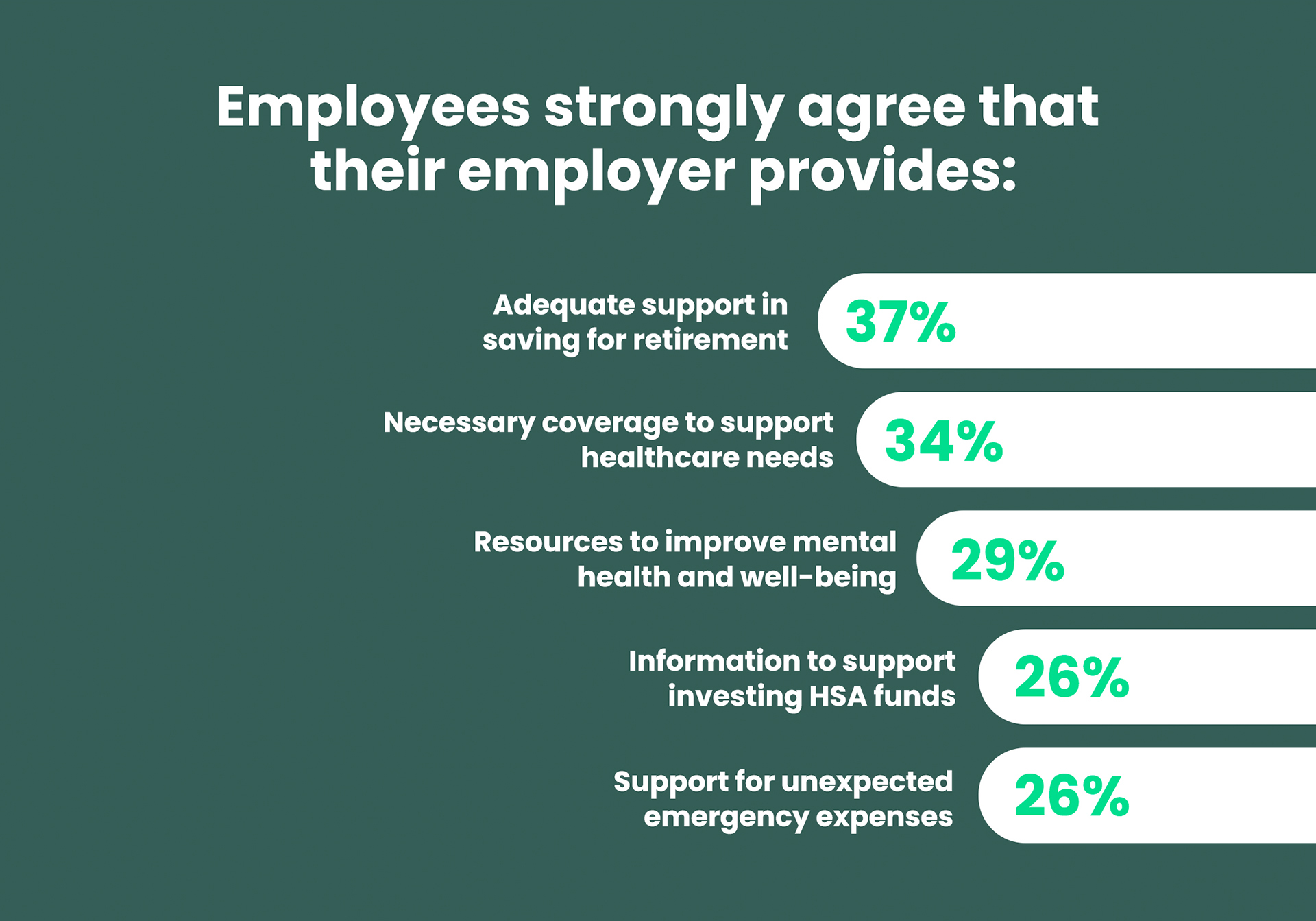
Insights & actions
Employees identified employer support with financial emergencies as the second highest aspect that would enhance their view of their employer, though only 26% strongly agree that their employer adequately supports them with emergency expenses. Since ESAs were the least reported benefit that employees said their employer offered at only 8%, employers can help fulfill a major employee need that isn’t often met by offering an ESA.

How employers can help
When asked how they want their employer to help with healthcare expenses, the highest response at 42% was to provide lower insurance premiums. Since the HSA-compatible option of a high-deductible health plan (HDHP) may offer lower premiums, you can satisfy this preference while also encouraging employees to use the benefits of an HSA to maximize their health and financial wellness. Additionally, over half of employees (52%) claimed they would be more likely to enroll in an HDHP with an HSA if their employer offered an initial or matching contribution. Fourteen percent of employees cited wellness incentives as a desired way for employers to help with their healthcare expenses. By using a wellness incentive program to offer HSA contributions, you can fulfill a specific employee want while encouraging HSA enrollment.

Sixty-four percent of employees said they want to save more with this number highest among millennials (69%), but it’s not clear whether they know how to, or whether they financially can. However, the obvious interest shows there’s an opportunity to engage employees in financial wellness. Offering tools and resources from self-service calculators and videos to one-on-one and group meetings that support financial education, awareness of investment opportunities and smart spending strategies can help employees achieve their financial goals and build savings for the future. By building a strong benefits package of compatible, complementary accounts, employees can improve their financial planning abilities and create a bigger nest egg for the future.
Insights & actions
Employer HSA contributions are a new standard that employees have come to expect. And employees said that getting support with financial emergencies and lifestyle benefits would enhance their view of their employer. You can go above the standard when it comes to funding employee benefits accounts by contributing beyond HSAs to accounts like LSAs, FSAs, ESAs and more.

Unlock the next level of employee engagement
Benefit teams work tirelessly to build benefit packages that support employees’ health, wealth and well-being. From robust healthcare options to competitive retirement plans, you’re doing everything you can to help your workforce thrive. But despite these efforts, employees are still looking for more from their benefits. Rising healthcare costs, financial uncertainty and evolving workplace expectations mean that traditional benefits alone may not be enough. Today’s employees want personalized support, guidance and resources to help them navigate life’s challenges.
With the right plan options and understanding of what benefits will work for them, employees can choose the right path to maximize their financial and physical health. Plus, they can avoid employee-identified issues like taking on debt to cover healthcare expenses, struggling to pay for prescription medications or saving for retirement. You can help meet employee needs and set yourself apart from other employers by not only offering additional benefit accounts like LSAs, FSAs and ESAs, but giving your employees the educational resources they need to make the most of their benefits and plan for the future. With HSA Bank’s support, you can access personalized year-round communications, webinars, planning calculators and more to help employees better understand and engage with their benefits so they feel secure, valued and ready to thrive.





